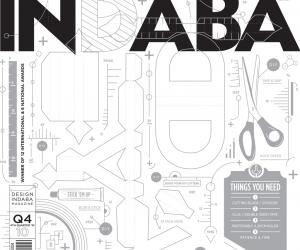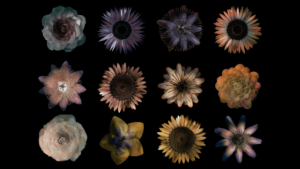First Published in
The energy and inventiveness with which Brazilian design has been surprising the world in recent years has an important precedent: The artefacts produced by ordinary people to meet their own needs. In the streets of great or small cities, especially in the poor and fringe areas, we can see vending carts, barbecue grills, toys, furniture, utensils, and other simple and intelligent solutions that show perfect functionality and the sustainable use of materials.
Their form goes further than function, to follow the heart and emotion. There is no fear of ornamentation or strong colours. These everyday objects are made by the very same people who use them. We can call it popular design or anonymous, spontaneous design.
Finally there is now a place where these works can be displayed and admired. The São Paulo city government decided this year to turn a building designed by architect Oscar Niemeyer in the 1950s, which was being used as a public office, into a new museum.
Pavilhão das Culturas Brasileiras or “Pavilion of Brazilian Cultures” will be an exhibition space and a centre for research and reference to protect and disseminate Brazilian cultural diversity. The emphasis is on both material and non-material cultural heritage of minority and less privileged groups that have not been given much institutional visibility so far. The goal is to legitimise, strengthen and draw attention to the traditional and contemporary cultural practices of the Brazilian people, in all its strength and plurality.
To announce the new museum, the São Paulo government put together the exhibition Puras Misturas, meaning “Pure Blends” or “Pure Mixtures”, which ran from April to November 2010. The paradoxical and contradictory expression “puras misturas” was coined by Brazilian writer João Guimarães Rosa and reveals, in a poetic form difficult to translate, what we believe is the synthesis of Brazilian culture: Its mixture, its diversity.
In the entrance to the exhibition, which occupies approximately 2 500 square metres, three vending carts reveal beauty and dreams. One is used by a coffee vendor who circulates in the streets of Salvador, the blackest city outside of Africa, in the state of Bahia. Paulo Cezar de Jesus mixed together an industrialised metal miniature truck with a wood container, where he can display thermoses of coffee and also diffuse the sound of Brazilian music through a CD player. The desire for ornament is evident.
The taste for exaggeration is also present in a cart found in Penedo, a small city in Alagoas in the poor North-East region, and used by a man who sells coconut sweets. Also in the North-East region, in the city of Juazeiro do Norte in Ceará state, a popcorn vendor preferred a more discrete option, and painted his cart with the green and yellow of the Brazilian flag.
Although not aware of it, these street vendors are using one of the basic attributes of design: Its ability to confer identity on to a product or service distinguishing it from similar ones. Each vendor designs their own work tool in a manner that makes their product recognisable to their clients.
Comparing different objects made with the same intention shows how diverse people’s answers for their everyday needs are. Barbecue is a widely spread way of preparing food in Brazil. Yet, utensils collected in the North-East region in 2009 show completely different ways of improvising a barbecue grill. One in particular demonstrates an interesting way of reusing a discarded washing machine component. Others recycle scrap metals, and some add colour and decoration.
One of the highlights of the exhibition is the interactive installation of seats that can be touched and used. They come from all over Brazil. Stools made by indigenous peoples are carved from a single piece of wood, and display shapes and drawings full of traditional meanings passed on through generations. They are still made in many societies of the Amazon region today. Indigenous peoples like the Juruna, Kadiweu, Kamayurá, Karajá, Mehinaku, Suyá, Tiriyó, Trumai, Tukano, Urubu-Kaapor, Wai Wai, Wajãpi and Waurá are all represented at the show.
The popular seats, many of which are made by unknown people, use materials available in their own environment, teaching valuable lessons about ergonomic comfort and the use of raw materials. A recurrent element in Brazilian vernacular design is sustainability. Even before the word “ecology” existed in dictionaries, Brazilian people were already ecological. To create according to the local conditions, making correct use of existing materials, and creating from wastes and leftovers is a common attitude in Brazilian society, including the middle class.
The stools by formally educated designers are sometimes directly inspired by this popular wisdom. In other cases, they reinvent the act of sitting in terms of a contemporary lexicon. Displaying all these contemporary works together helps celebrate the diversity of Brazilian culture.
After decades of ignoring their cultural roots, Brazilian designers are now increasingly participating in creating popular solutions. These designers have turned the “disadvantage” of Brazilian culture – a lack of tradition compared to more established civilizations, such as in Europe – into their own “advantage”. Since everything is new and about to be invented, freedom and lightness can infuse the work. The most widely known designers in this regard are Fernando and Humberto Campana. At Puras Misturas, their chair Multidão, which is made from an assemblage of rag dolls, is displayed alongside a collection of dolls from the Ancient Folklore Museum (the collection now belongs to Pavilhão das Culturas Brasileiras). On the other side, there is a doll recently designed by fashion designer Ronaldo Fraga, another Brazilian who goes deep into popular culture to get inspiration for his work.
The Puras Misturas exhibition transcends the categories of “high” and “low” art, acknowledging and highlighting the dialogue between them. Through cross-sectional approaches, juxtapositions are created between different languages and forms of cultural works created in distant times, places and social environments – between literate and illiterate, refined and popular cultures. Through this we are able to show how they feed one another in a permanent, dynamic process of re-creation and redefinition. This ultimately reveals the ambiguity of such opposition, which originally characterises these two spheres.
Four years ago, the Cooper-Hewitt National Design Museum in New York showed the important exhibition Design for the Other 90%. It’s about time to know the different initiatives, especially in the Southern Hemisphere, of “Design by the Other 90%”. They can be a source of creative energy, and can inspire us to respect and celebrate cultural diversity.
Adélia Borges is a São Paulo-based writer, journalist and curator. She is the chief curator of Puras Misturas and of the Brazilian Design Biennial, and thinks Southern Hemisphere design solutions should be better known worldwide.
Mariana Chama is a São Paulo-based photographer. Her focus is on exhibitions and live concerts.


























